"Kubba Hamuth," also spelled "hamouth" is a deliciously tangy soup with plump, juicy dumplings made with a combination of beef and bulgur, and loaded with perfectly seasoned ground meat. The Kubba is similar to Kubba Mosul but is cooked in a thick and rich tomato-based soup.
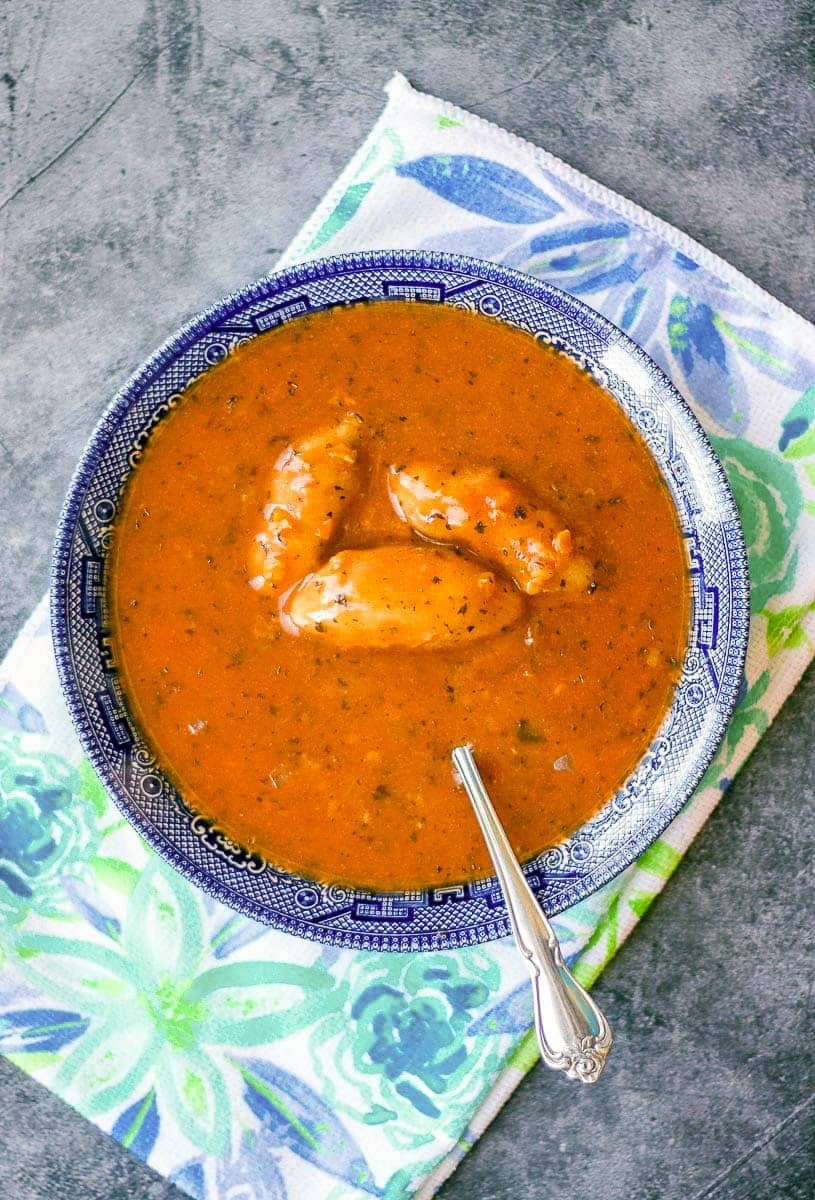
🧐 About This Recipe
The name "Kubba hamouth" means "kubba in sour soup." While this recipe uses rice flour, there is another nearly identical soup that Assyrians cook called "kubba't pirda."
"Kubba't pirda" translates to "kubba made with bulgur" (instead of rice flour). The rest of the ingredients of the two soups are identical.
Kubba comes in various shapes and sizes and is prepared in many different ways. We'll take a look at some of the variations later in the post.
🥘 How to Make This Recipe
Step 1: Heat one teaspoon of oil in a medium-sized pan and brown the ground beef and onions.
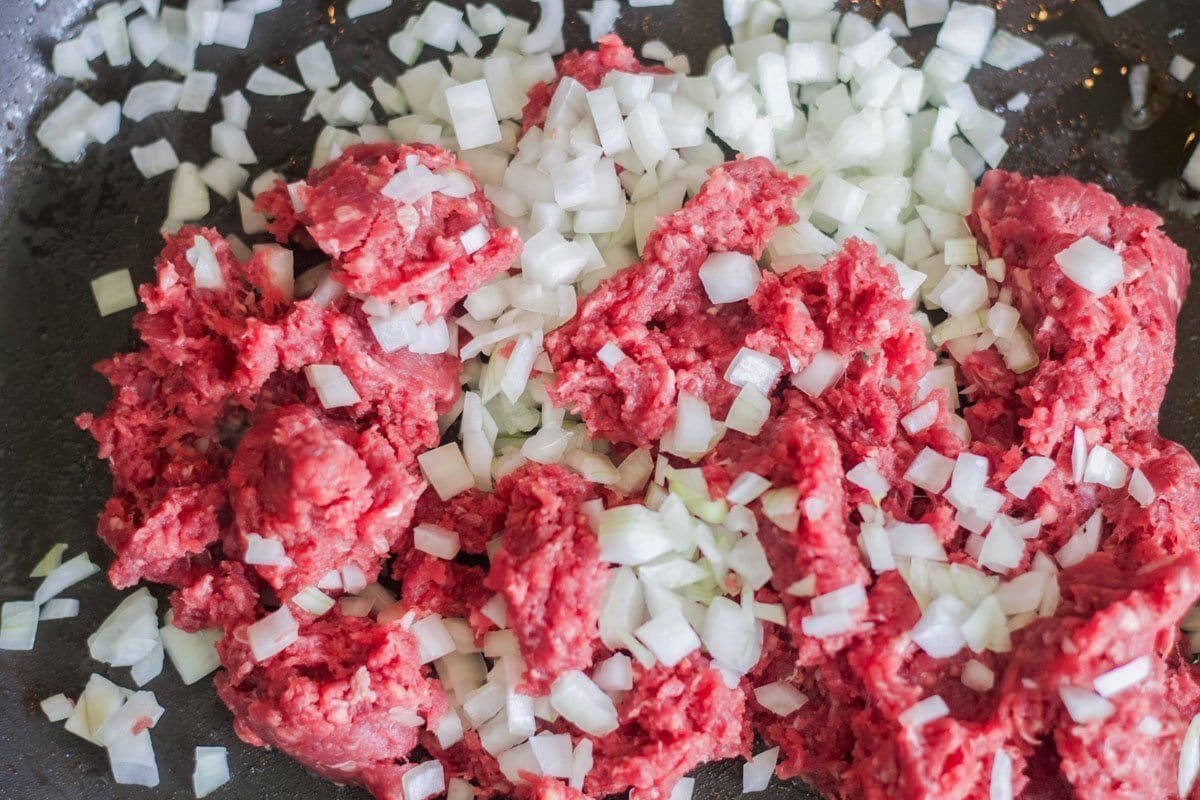
Step 2: Mix in parsley, paprika, black pepper, allspice, and salt. Set aside to cool.
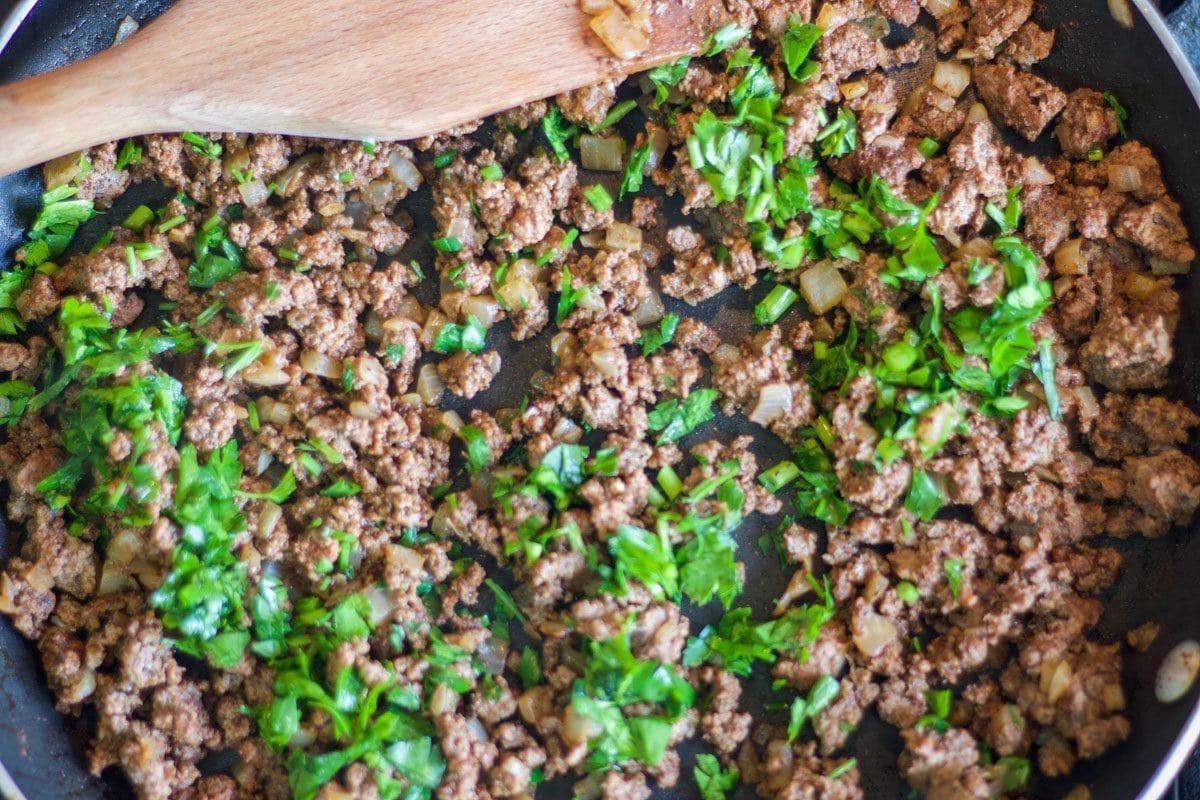
Preparing the Shell
Step 3: Add the first three shell ingredients in a medium-sized bowl, and mix by hand. Gradually add water, until the dough comes together. Knead the dough until pliable, then set aside.
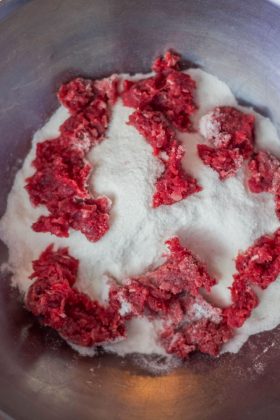
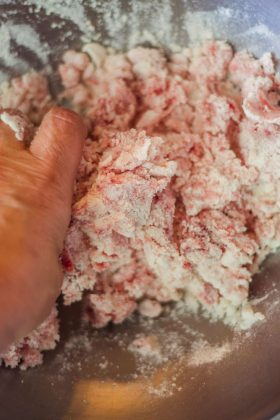

Kubba Hamouth Soup
Step 4: Add one tablespoon of oil to a six-quart Dutch oven. Fry the onion until transparent. Add the paprika and stir until fragrant.

Step 5: Pour 6 cups of boiling water into the Dutch oven. Add the remaining stew ingredients and stir until the tomato paste is dissolved. Turn the heat down to low, then simmer.
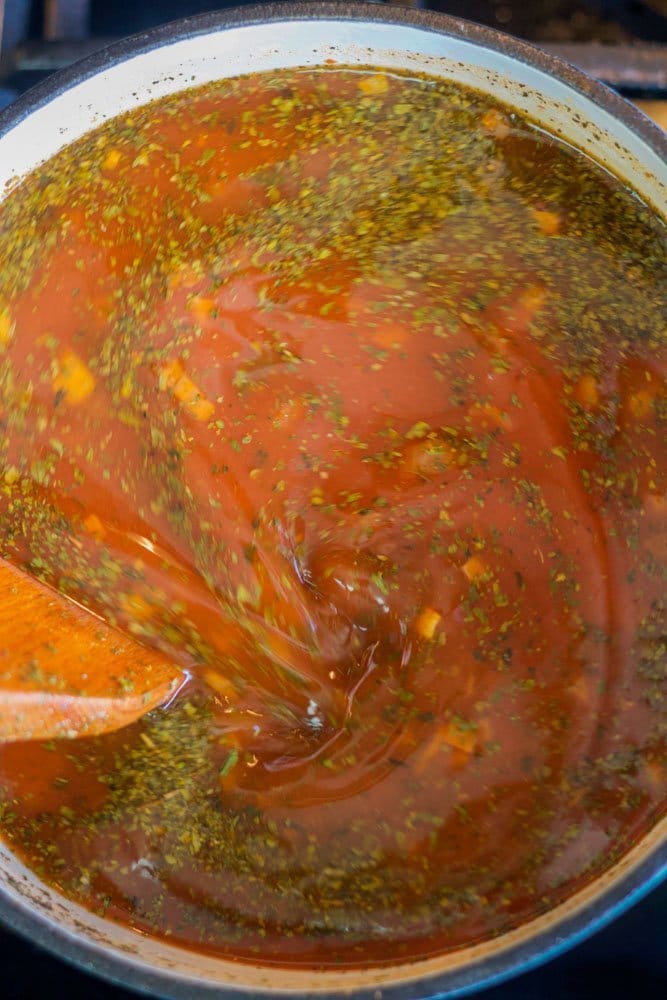
Kubba (dumpling) Assembly
Step 6: Take a walnut-sized piece of dough and roll into a ball. Stick your thumb into the center of the dough and form a deep bowl. Fill with a full teaspoon of the cooled filling.
Would you like to save this recipe?
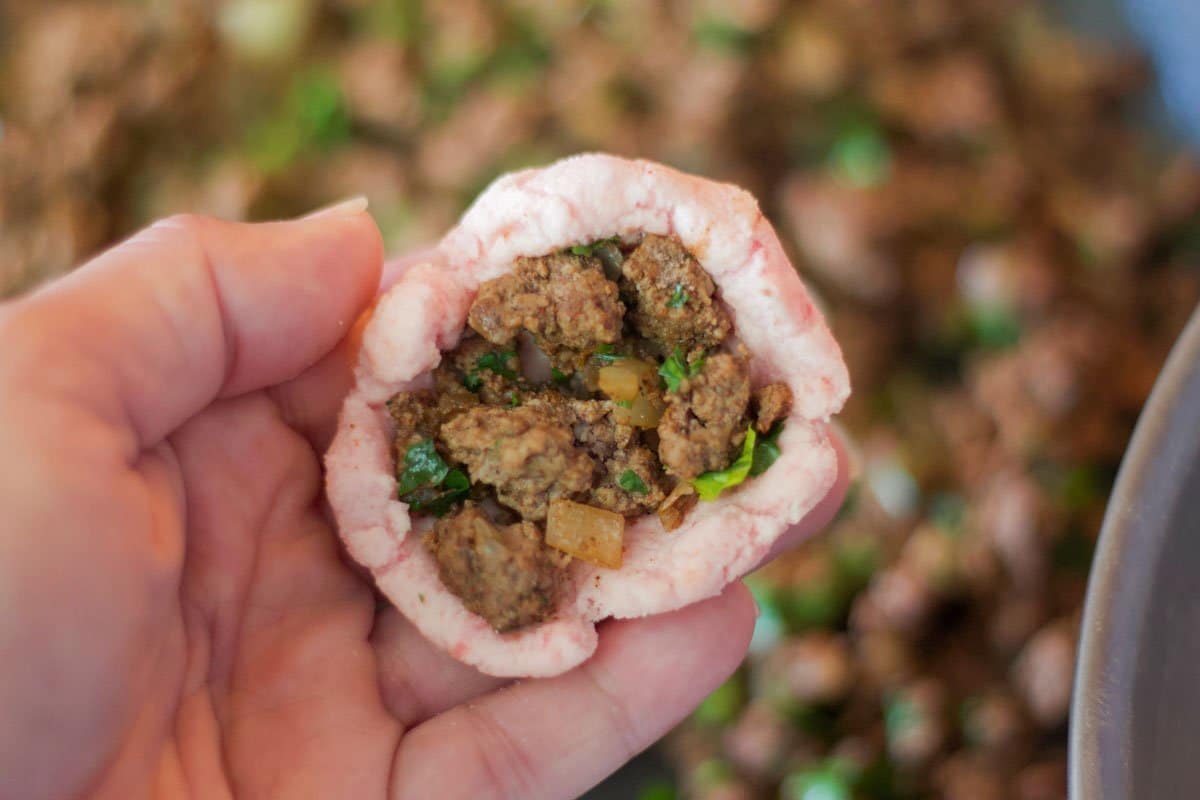
Step 7: Fold the dough over the filling to seal. Wet your hands if necessary, as you roll the kubba/dumpling between your palms. The end result should have the shape of a football, 2"- 3" in length. Repeat until you use up the shell and filling mixture.
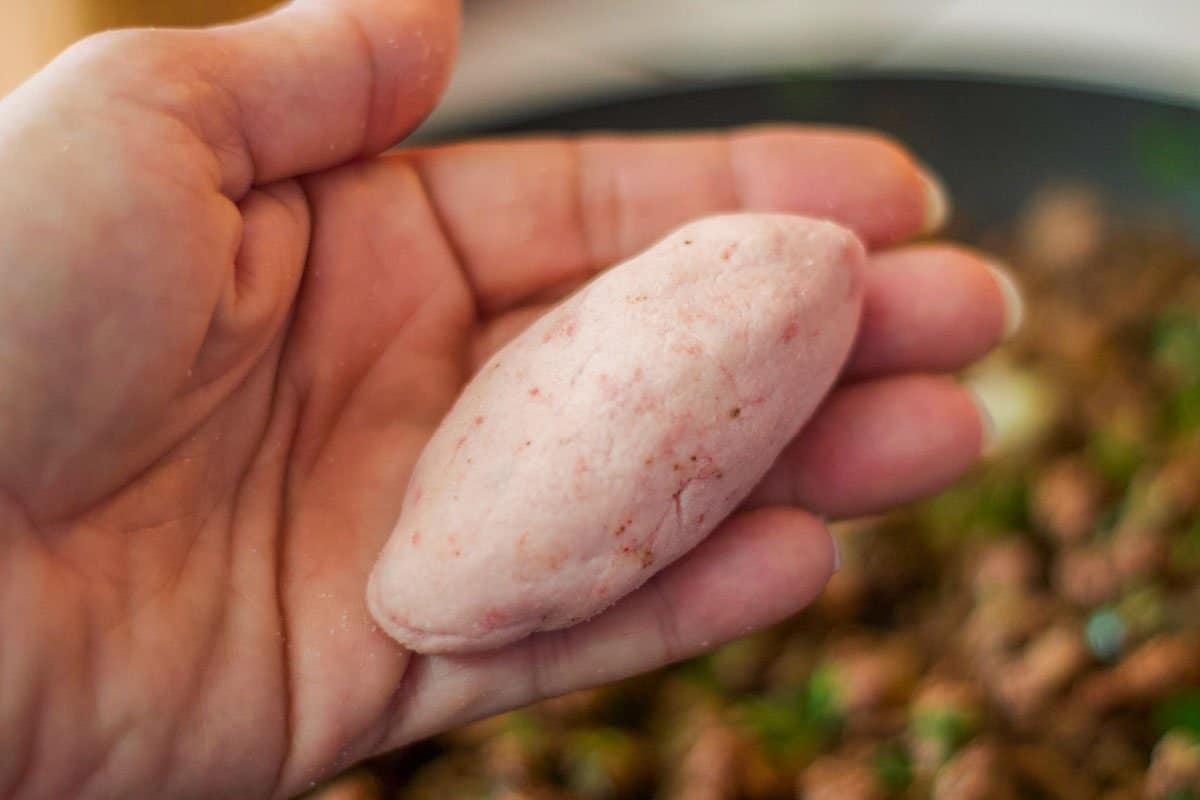
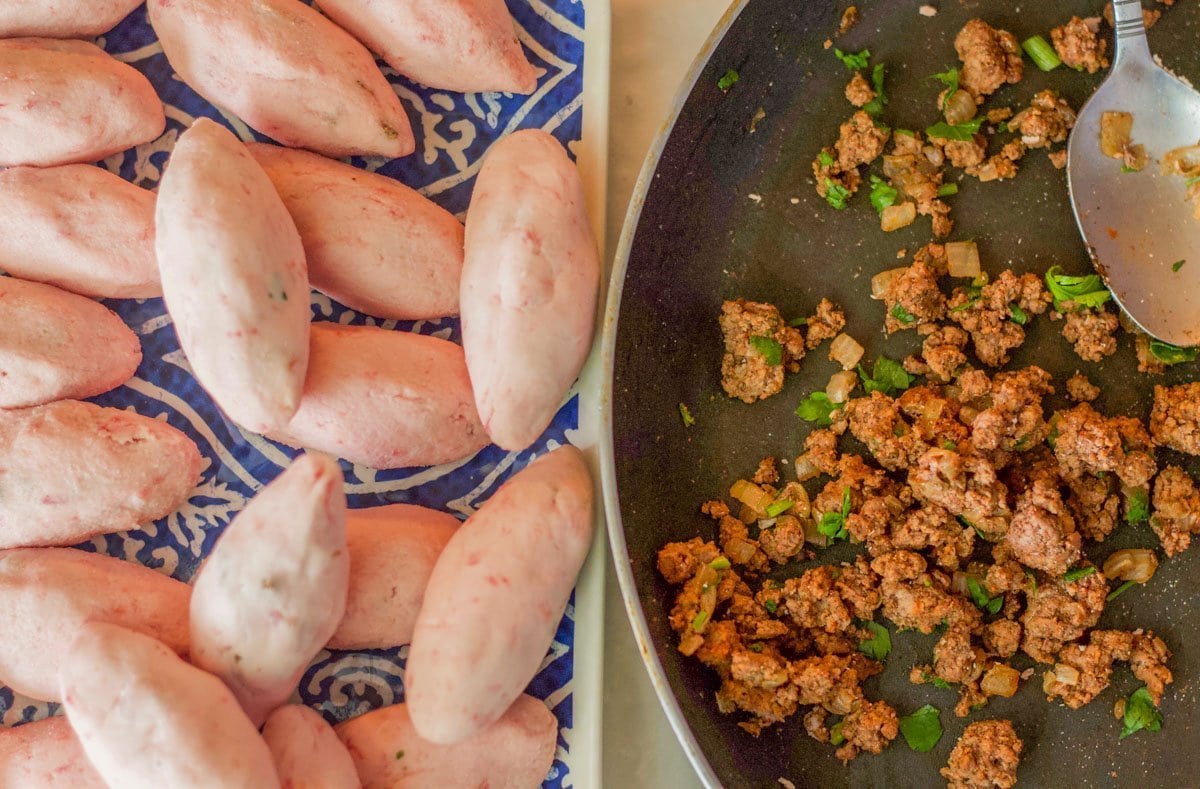
Step 8: Gently add the dumplings to the soup. Carefully stir to keep the dumplings from sticking to the bottom of the pot. Cover and simmer for 30 minutes.
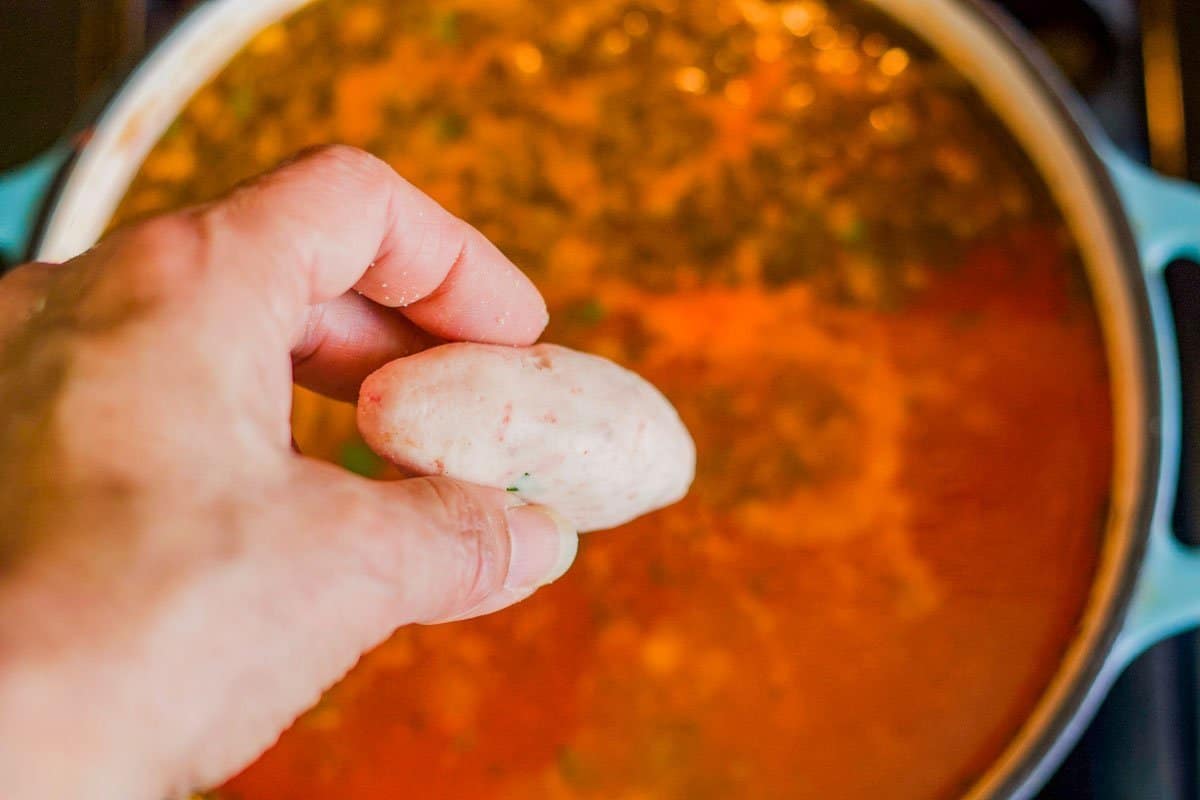
Pro Tip: If you have leftover rice flour, head over to FoodDrinkLife to find other uses for rice flour!
🍽 Serving Suggestions
Add two to four kubba to each bowl. Ladle soup over the kubba and enjoy! Because this soup is quite filling, it's usually served as a main dish.
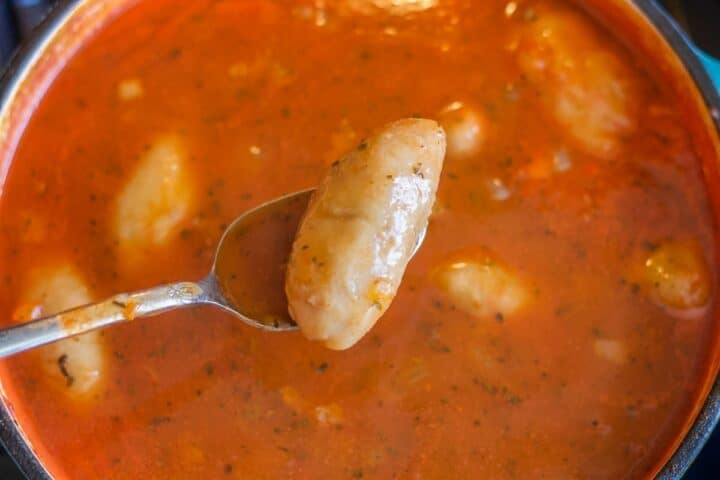
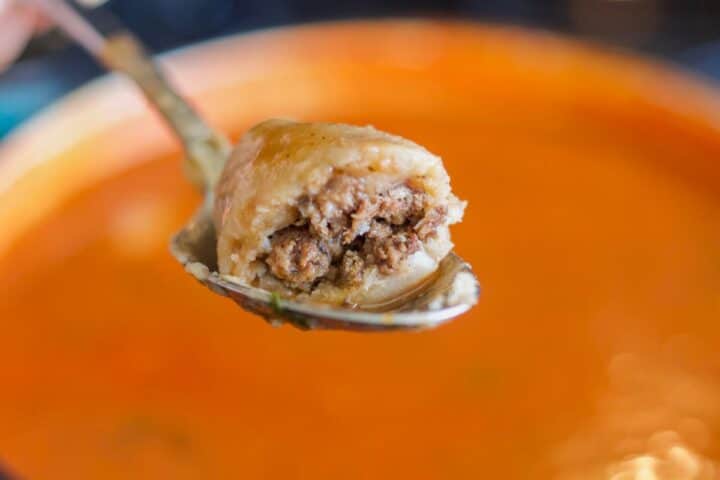
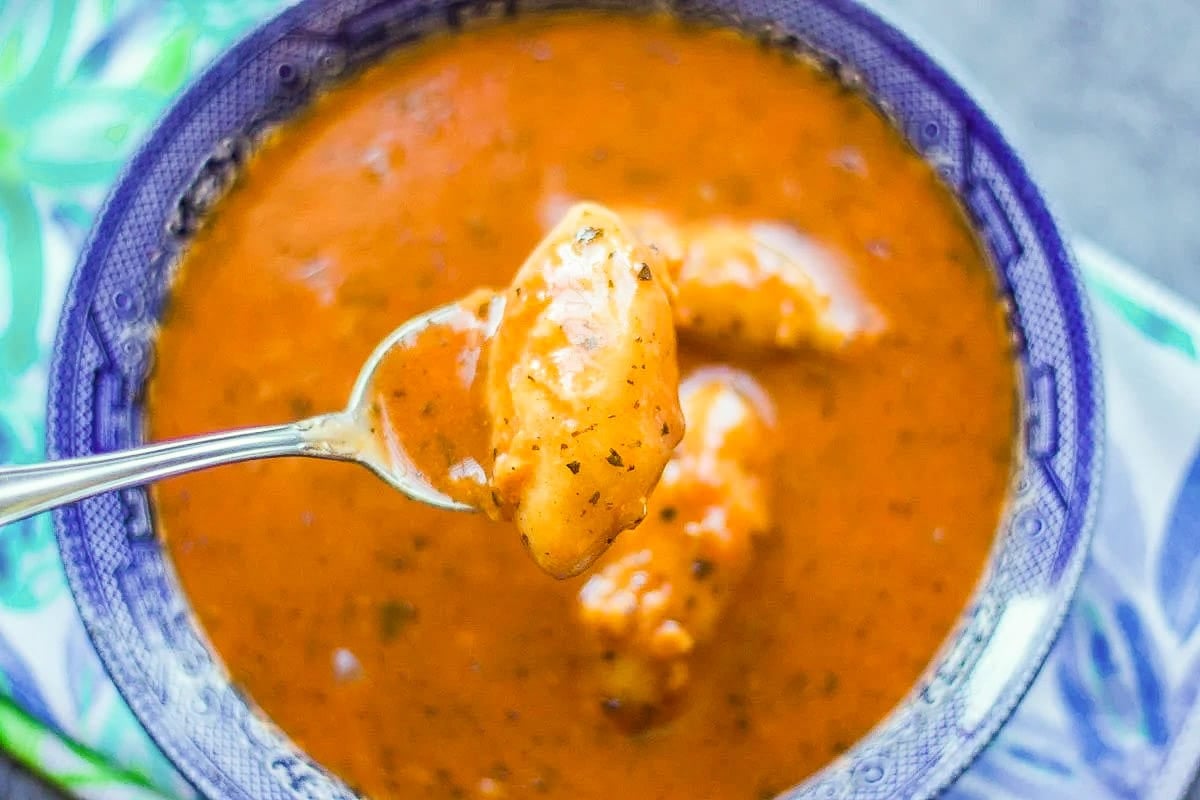
🤷🏻♀️ Recipe FAQs
The outer shell of Kubba (or Kibbeh) is made with a mixture of lean ground beef or lamb and any of the following: Jareesh (cracked wheat and the name of a Middle Eastern Dish), fine bulgur, and semolina.
The filling of Kibbeh is made with ground beef or lamb, finely minced onions, and various spices.
This football-shaped kubba is known as "Kubba Halab" or "Kubba from Halab." "Halab" is the Arabic name for the Syrian city known as "Aleppo."
The paste to make the shell is made with rice, instead of bulgur. Unlike other Kubba, these little dumplings are deep-fried.
👩🏼🍳 Pro Tips
- Kubba dumplings freeze really well. Simply make the dumplings ahead of time and place them on a tray in the freezer until they're semi-frozen. Then store in freezer bags until ready to cook them.
- Frozen Kubba can either be boiled in water or cooked in this soup. There's no need to defrost the Kubba before cooking them.
- Sometimes spinach is added to the soup along or in place of the mint.
- Lentil can also be added to this soup, just don't add (less than one-quarter of a cup) or the soup will be way too thick.
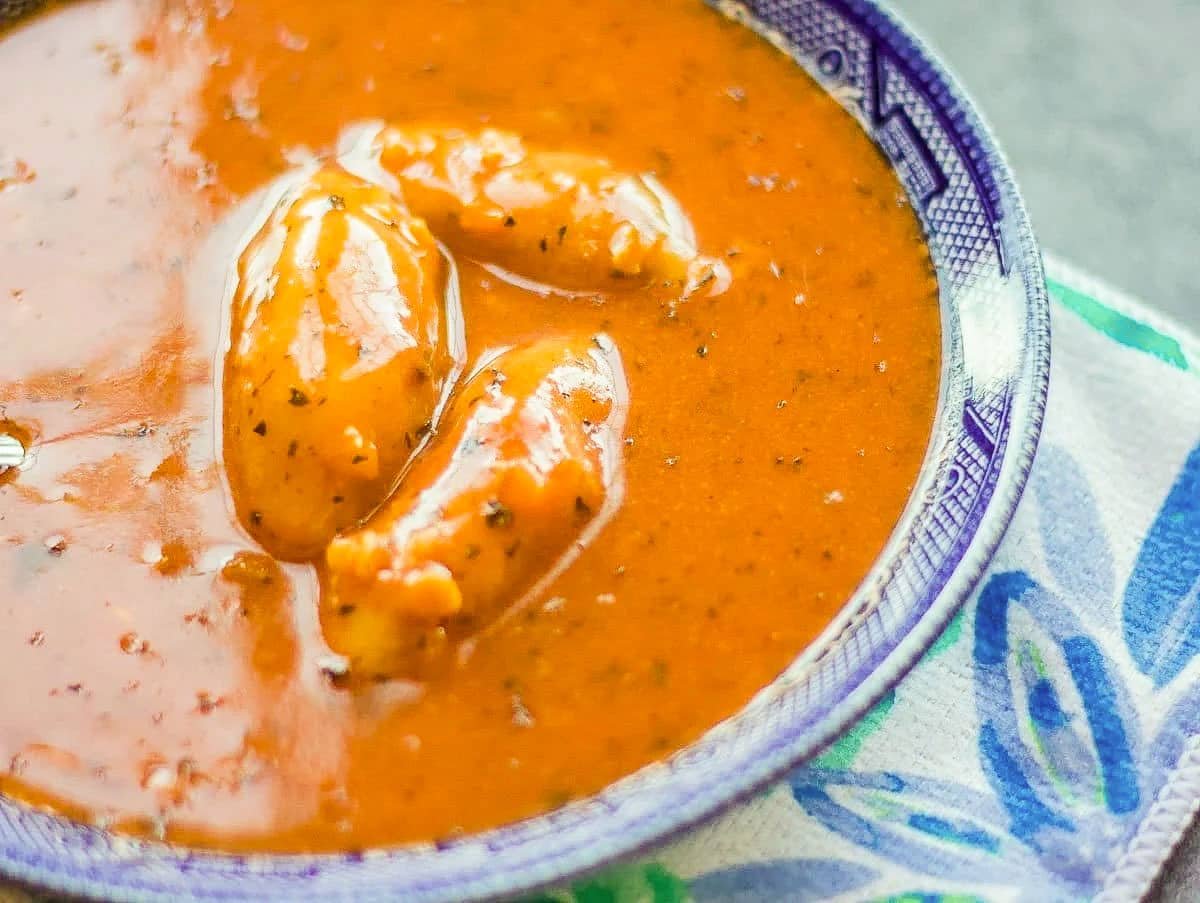
🧆 Related Recipes
📖 Recipe
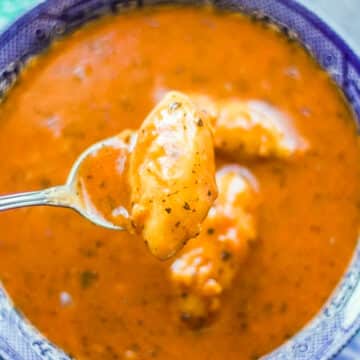
Kubba Hamouth (Meat Dumpling Soup)
Ingredients
Filling
- 1 teaspoon vegetable oil
- ½ pound ground beef
- ½ medium onion diced
- ¼ cups parsley diced
- 1 teaspoon paprika
- ½ teaspoon black pepper
- 1 teaspoon allspice
- ½ teaspoon salt
Shell
- 1½ cups rice flour
- ¼ pound ground beef
- ½ teaspoon salt
- ½ cup water
Soup
- 1 tablespoon vegetable oil
- ½ medium onion (diced)
- 1 tablespoon paprika
- 6 cups water (boiling)
- 6 ounce canned tomato paste
- 1½ teaspoon salt
- ½ teaspoon citric acid
- 2 tablespoon dried mint
- 2 tablespoon rice flour (mixed with ½ cup water)
Instructions
FILLING
- Heat one teaspoon of oil in a medium-sized pan and brown the ground beef and onions.
- Mix in parsley, paprika, black pepper, allspice, and salt. Set aside to cool.
SHELL
- Add the first three shell ingredients in a medium-sized bowl, and mix by hand. Gradually add water, until the dough comes together. Knead the dough until pliable, then set aside.
Stew
- Add one tablespoon of oil to a six-quart Dutch oven. Fry the onion until transparent. Add the paprika and stir until fragrant.
- Pour 6 cups of boiling water into the Dutch oven. Add the remaining stew ingredients and stir until the tomato paste is dissolved. Turn the heat down to low, then simmer.
Form Kubba
- Take a walnut-sized piece of dough and roll into a ball. Stick your thumb into the center of the dough and form a deep bowl. Fill with a full teaspoon of the cooled filling.
- Fold the dough over the filling to seal. Wet your hands if necessary, as you roll the kubba/dumpling between your palms. The end result should have the shape of a football, 2"- 3" in length. Repeat until you use up the shell and filling mixture.
Cook Kubba
- Gently add the dumplings to the soup. Carefully stir to keep the dumplings from sticking to the bottom of the pot. Cover and simmer for 30 minutes.
Notes
- Kubba dumplings freeze really well. Simply make the dumplings ahead of time and place them on a tray in the freezer until they're semi-frozen. Then store in freezer bags until ready to cook them.
- Frozen Kubba can either be boiled in water or cooked in this soup. There's no need to defrost the Kubba before cooking them.
- Sometimes spinach is added to the soup along or in place of the mint.
- Lentil can also be added to this soup, just don't add (less than one-quarter of a cup) or the soup will be way too thick.

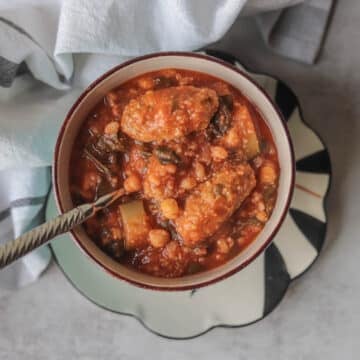

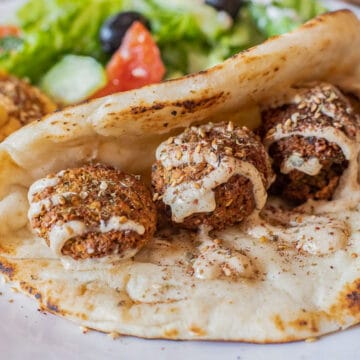
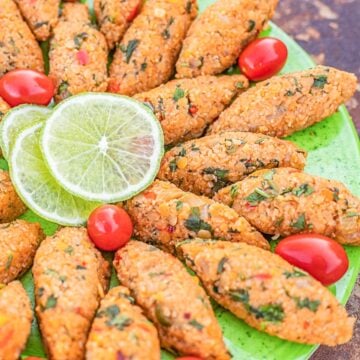

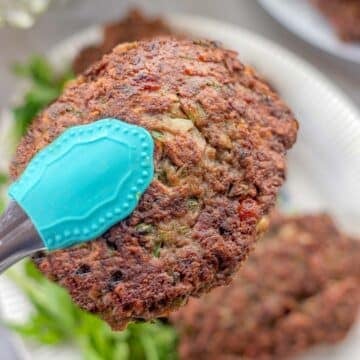
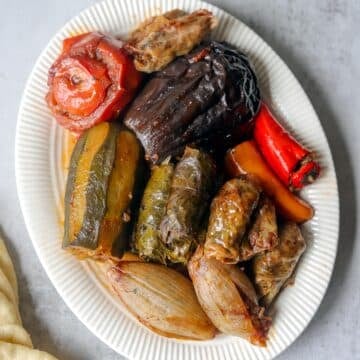
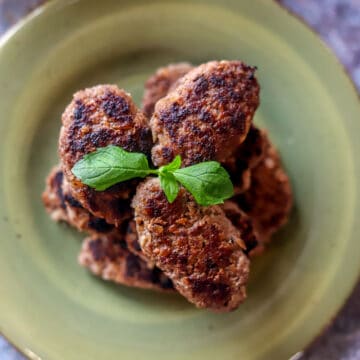
Lena says
Hello 😇,
Thank you for sharing this wonderful recipe. I wanted to ask about the rice flour, I was told if I used rice flour to make the kubbeh, they would turn out to be soft (mushy) is that true? Should I use rice grits? which is a bit more coarse than the flour. Thanks you and the Lord Jesus Christ bless you and yours 🙏🕊🌸.
Hilda Sterner says
Hi Lena, My mom always used rice flour with wonderful results and that's how I've done it too. You can also make the other version with fine grind bulgur. I've never tried making them with grits so I can't advise you on that. Let me know how it goes. Thank you & God bless you too! 🙂
Chanel says
Hi! Is it possible to use almond flour or coconut flour instead of rice flour? I am trying to figure out a way to make it lower carb
Hilda Sterner says
Hi Chanel,
I like the way you think! I have not tried it with either, but maybe I will give it a try and let you know how it goes.. unless you beat me to it!
Jeffrey A. says
Hi Hilda,
Everything you wrote here is wonderfully informative, but I'm shocked that your recipe does not include baharat. To the average reader who might not be from our culture, they might think that allspice will suffice. American/European allspice ≠ our baharat.
I just really can't imagine this recipe without baharat. That's all I'm saying! 😅
Hilda Sterner says
Thanks, Jeffrey, I can't believe I didn't mention baharat either. I even have a recipe for it that I could have linked to. 🤦♀️ Next time I update that post, I will add that info.
Jessica says
Is the ground beef cooked first that is added to the rice flour to make the shell? Or is this raw meat? Thank you...
Hilda Sterner says
Hi Jessica, the shell meat is raw, and the filling meat is cooked.
Krikor says
In your text you say to add the three ingredients, add water and mix in a bowl. Can you give the name of the three ingredients to make the shell and the amounts?
Hilda Sterner says
The shell ingredients as well as the directions are found on the bottom of the page in the recipe card. You'll find a "shell" heading and notice that the ingredients are: 1½ cups rice flour,▢ ¼ pound ground beef,▢ ½ tsp salt. These are the ingredients I'm referring to.
AG says
These look like my mother in laws Kubba .. delicious.. How many kubbas will this batch make ?
Hilda Sterner says
Hi, Thank you for your comment! This recipe makes one pot of Kubba. I've never counted exactly how many kubbas you get. It will depend on the size you make them and the thickness of the Kubba. Sorry, hope I answered your question.
Liz says
Marci - it sounds like you’re asking for ras asfour. If not, can you describe it?
This kubba is my most favorite! I like to double the recipe because we go through it quickly.
HildaSterner says
Thanks for the suggestion, Liz. Why didn't I think of that? I have a recipe for ras asfour in my cookbook. I will post that recipe one of these days.
Ano says
I try your recipe yesterday. It was delicious, but I had to dobble up the recipe. I mix the semolina flour with fine bulgur, and ad a cup of the rice flour (i was afraid the kibbeh would open when cooking)
And drop the onion in the soup. Had turnips, daikon, squash, spinach too. And a whole lemon, since we like it really sour.
Hilda Sterner says
Hi Ano,
Thank you so much for the review and the details of how you changed the recipe. I don't usually add all the extra veggies but since my garden is doing so well right now, I might add the extras. By the way, don't worry about the kubba opening up. I've never had that happen yet. Enjoy!
Kerry says
Do you know of a Chaldean dish that is similar to the soup version, but uses apricot paste (I think) in the soup base? It is amazing, but I do not know what it called and searches brought me to your page.
HildaSterner says
Hi Kerry,
There is a stew that has apricots in it, but it doesn't have anything to do with Kubba, unless it's a different dish than the one I'm thinking of. The one I'm referring to has lamb shanks in it. Does that sound familiar or are we talking about two different stews?
aeda says
The Kibbi with Appricot is from the north of Iraq is called Kibbi qaissi
Helena says
Yes that’s correct kubba Quessi has sweet taste n has apricot, usually is made for New Years.
Marci Olin says
I need some help! I’m looking for a recipe for a soup that is from Israel or Egypt and he says it’s an Arabic soup & the name is something like “Fauls” or “ Fouls” or maybe “Fools.” Have you ever heard of it & if you can could you give me a recipe?? I’ve been searching for hours but I’ve turned up nothing. Thank you for your time, I truly appreciate it.
Marci Olin
HildaSterner says
I sent you a message. Check your emails!